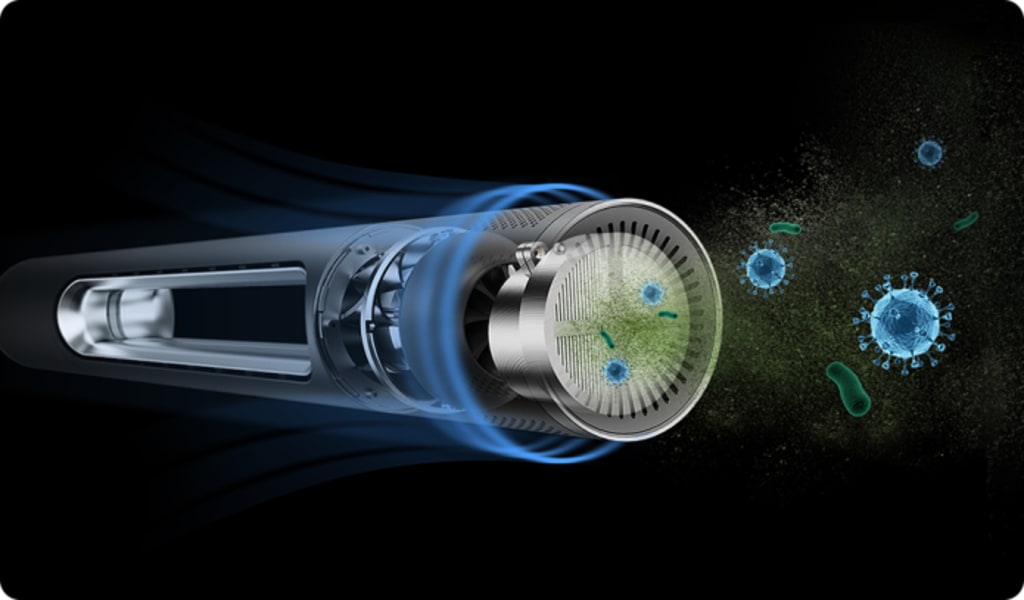Nanotechnology In Space Exploration
NANO TECH

This article examines the current applications of nanotechnology in space exploration, discusses possible future developments in the field, and reflects on its impact to date. While nanotechnology has been used in space (or extraterrestrial) technologies for decades, it was not until the mid-2000s that it began to be looked at as a fundamental part of space exploration. This paper will look at nanotechnology in terms of three different categories: technology applications, possible future developments, and its impact to date.
1. Introduction
You have probably been told to put yourself in your customer’s shoes, but what does that mean? Many people define empathy as “the ability to understand and share the feelings of another,” and that’s a pretty good definition. With the advancement of new technologies, scientists are increasingly able to put themselves in the shoes of their potential customers, allowing them to put themselves in the mind of the potential customer even further than they could use words alone. While "put yourself in your customer’s shoes" is more appropriate in the non-telecommunications and project-based industries, in the communications, information retrieval, and system design (Data Science) industries empathy is essentially the ability to understand data analysis. It does not describe the understanding of what a company looks like daily, but the ability to do so. Let’s take a look at technologies that can help enterprises better understand their potential customers’ needs, and in turn, improve a company’s chances of success. Data-driven tactics One of the most fundamental technologies for better understanding your potential customers is a technology called data-driven tactics (DTDs). TDDs are the basis of information retrieval and represent one of the greatest advances in data science. IBM’s Watson is a prime example of a TDD and its use in helping our global healthcare system find cures and respond to health concerns. If you haven’t seen a buzzword of its own coined by the mainstream media, data-driven tactics are probably the most buzzed-about space science advancement after anti-gravity spacesuits. The point is that all artificial intelligence is built on data and in the past few years, data-driven tactics have incorporated the use of intelligent systems (i.e. intelligent robots) to better understand the scenarios that occur in the real world. As is true in any evolution, the first step formed the foundation for the later developments, and that first step was artificial neural networks (ANNs).
2. Nanotechnology in Space Exploration
STAGE OF A NEW NANOTECHNOLOGY
There are three main stages in the application of new technology in space:
Development of the technology used for space flight
Support from financial and research agencies for technological development
Relevance of the technology to other scenarios that space exploration might be used for such as long-term habitat construction and habitation, manufacturing, medicine and biochemistry, education, and communications.
Nanotech is an example of a third technology stage. Technology that is suitable for space exploration is the third stage, and the particular applications that are of interest to space exploration are the fourth and fifth stages.
Due to its space exploration theme, the paper that follows starts with a general overview of space exploration technology and then extends it to Nanotech: the fourth and fifth stages. This includes a short discussion of how Nanotechnology has been used in space and explores how it might develop in the future.
Nanotech Applications in Space Exploration
Nanotech is not a new technology and, just like many others ( spacecraft, radio Star Trek transporters, etc), Earth-based researchers and industries have been developing it since the 1960s. It is the most mature of the three technologies that make up the third stage of space exploration, and Earth-based researchers have been using it extensively.
However, Nanotech is not like every other space technology that Earth-based researchers are using; rather than simply utilizing it for missions in outer space, researchers are trying to utilize it for missions on Earth. Below is a brief overview of the major applications:
Desalinization
Desalinization is the process of removing excess salt from water. This is done by using ultrasounds to selectively stimulate certain molecules in the water.
3. Applications of Nanotechnology in Space Exploration
Background
Nanotech, short for "new technology," was founded as an actual scientific discipline back in the 1960s. However, it is generally accepted that the term has come into the popular lexicon due to the enormous impact that technologies like the smartphone and genetically modified foods have had on the way society views technology in general (something that Eric Schmidt describes in some detail in this TED talk):
"The word ‘technology’ has an emotional connotation; it implies some hidden secret and that we are some kind of a technological change... The problem is that the word technology is no longer emotionally resonant; it has come to mean everything that can be divided by technology... That is why we are hearing more and more about space as a new frontier for innovation. Space exploration is the key to unlocking the mysteries of the Universe and cutting down the technological distance to the stars. Space exploration is utterly necessary right now, but it is also wholly unnecessary. Ignoring space doesn’t aid our country in attaining the Moon, nor does disregard it hinder reaching Mars... Okay, technically I exaggerate — it does contribute to a very negative scientific stereotype of space. That stereotype is that the space fandom is for nerdy teenagers and that in space things die." (Schmidt 67)
Technology applications in space exploration
There are still many things that need to be done for human or robotic expeditions to be sustainable; however, the technologies necessary to some degree (and along with this any scalability of an exploration effort) are now available to Earth citizens.
4. Future Developments and Impact to Date
This survey was conducted with a sample of 8,000 people across the globe, which included a large sample of tech-savvy Internet users. This was a truly global study that should prove immensely useful in helping companies and brands to truly understand the needs and wants of today’s tech-savvy consumers. ENVIRONMENT IN A NANO-SPECTRUM
Nanosatellites have been explored by scientists since the 1960s. They were originally intended to be used for scientific and navigational purposes but were quickly realized to be much more versatile. Nanosatellites can utilize warp drive technology designed to remove the gravity pull of the Earth in orbit, adding another planet or even a black hole to the equation. They can travel at very high speeds with minimal fuel or maintenance. This makes micro-gravity areas irrelevant in the exploration of planets, making it possible to go to different star systems and even different solar systems. While this might not be possible shortly, these traversals of space have a history that goes back centuries, especially due to the influence of the European Space Agency and NASA, which have a long-standing partnership through missions such as the Voyager Mission which have explored the outer planets. This evolved into the establishment of the International Space Station in 1996, which now has a permanent crew of six astronauts living aboard the laboratory. Today, researchers are working towards regional missions to investigate the Earth-Moon system.
Technology Instincts and Spaceflight
A technological instinct is perhaps the most scientifically established aspect of a human. This instinct is slightly different than an analytical mind because it relies on instinctive behaviors that cannot simply be taught and are instead learned without direct experience. While this instinct is an advantage in finding solutions to problems in science and learning new technology, it is perhaps also the main reason we are white-knuckling a white-hat approach to space exploration. Human action is the cause of our technological prowess, but this tendency to action is largely unconscious. READ MORE
About the Creator
mahmoud dagher
Space for digital marketing, SEO, freelancing, and online business






Comments
There are no comments for this story
Be the first to respond and start the conversation.